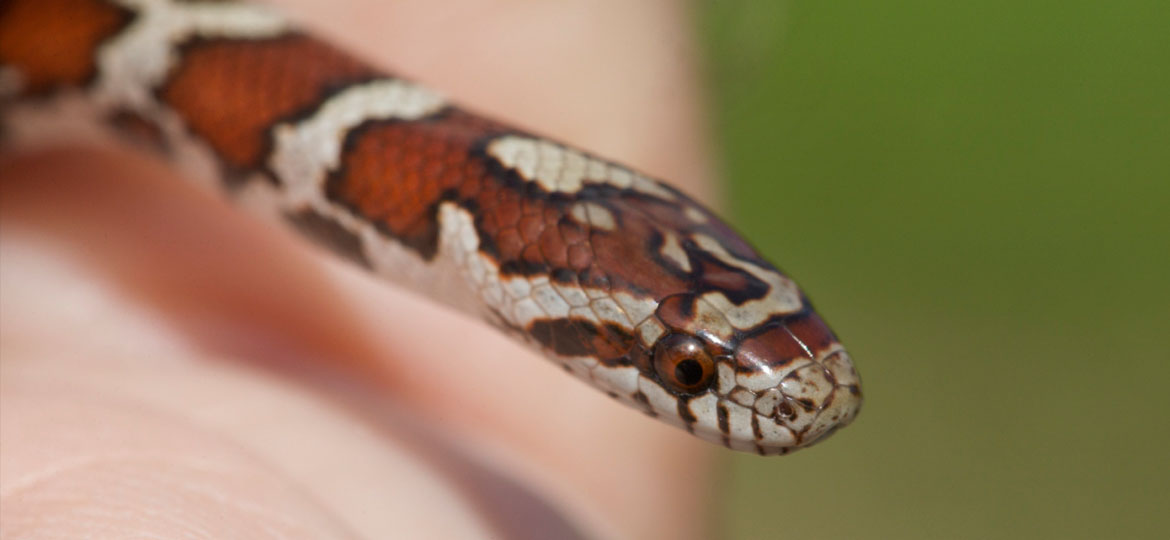
The Milksnake (Lampropeltis triangulum) has reddish-brown blotches outlined in black. They become darker with age. They also have a white "Y" (which may be complete or broken) on the back of their head. The Milksnake's underside has a white and black checkerboard pattern.
Milksnakes can grow to 2 to 3 feet long (the longest documented in Vermont is 43 inches) and have smooth scales. The Milksnake is also known locally as the Spotted or Checkered Adder, but it is not actually an adder.
Habitat
Milksnakes have a wider geographical range than most other species of snake. They can be found in the United States almost anywhere east of the Rocky Mountains. Milksnakes inhabit old fields, old buildings, stone walls, and ledges. It is widespread at lower elevations in Vermont.
Reproduction
Milksnakes probably mate while still in their hibernacula. They mate in spring before emerging and dispersing to their summer ranges. Mating is probably indiscriminate.
Milk snakes lay elliptical eggs in rotting logs or humus in the spring or early summer. These eggs are laid in clutch sizes of 2 to 17, usually about 10. Eggs hatch after an incubation period of 28 to 39 days with hatchlings measuring from 14 to 28 cm long upon hatching. The young are always brightly colored, though color dulls as maturity is reached. It takes 3 to 4 years to reach full maturity.
Diet
The Milksnake is carnivorous. Adults feed mainly on rodents such as voles, mice, and rats, but will also eat birds, bird eggs, lizards, snake eggs, or other snakes. Hatchlings seem to feed mainly on other young snakes. When prey is captured, it is constricted until it suffocates. It is then swallowed whole.
Management
No direct management, other than mapping its range throughout the state.
Status
The milksnake is common in Vermont, and it seems to do very well by old farmsteads and in stone walls.
